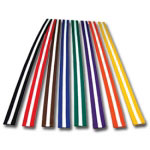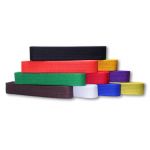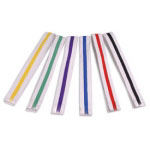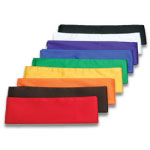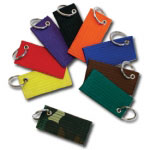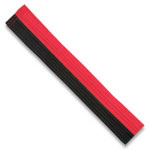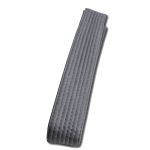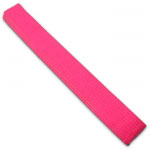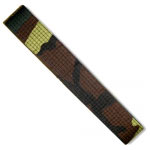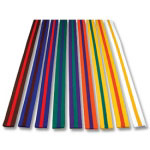Martial Arts Belts, Karate Belts and Kung Fu Sashes
-
$10.95
-
$10.95
-
$10.95
-
From $15.95
-
$11.95
-
$8.95
-
$9.95
-
$39.95
-
$10.95
-
$12.95
The concept of the rank belt was popularized in the early 20th century, with roots in the Japanese martial art of Judo. Jigoro Kano, the founder of Judo, is widely credited with introducing the kyu/dan ranking system and the idea of using belts to represent a student's progress. Originally, Judo practitioners wore only white or black belts. Over time, this ranking system spread to other martial arts such as Karate and Taekwondo, with more colors being introduced to signify the various levels of skill and development.
Karate belts are perhaps the most widely recognized symbol of martial arts progression. The karate belt order varies slightly depending on the school or style, but it generally begins with a white belt and moves through colors such as yellow, orange, green, blue, purple, brown, and finally to the coveted karate black belt. Each color typically represents an increasing level of knowledge, ability, and responsibility. These belts are often earned through rigorous testing that includes forms (kata), sparring, self-defense techniques, and sometimes board breaking.
In many martial arts systems, including Taekwondo and some styles of Karate, belts may include stripes or tags to represent intermediate levels. These striped belts help instructors and students track progress between full color ranks. For example, a yellow belt with a black stripe might indicate a student is halfway to the next level. The use of striped belts allows for more frequent milestones, which can help motivate students and ensure steady improvement.
While belts in Karate and other Japanese or Korean arts are standard, many Chinese martial arts systems, such as Kung Fu, use sashes instead of belts. A kung fu sash serves the same general purpose - to represent a student's rank and development - but is typically tied differently and may have a more traditional or decorative appearance. Kung fu sashes come in a wide variety of vibrant colors, including white, yellow, orange, green, blue, red, brown, and black. The ranking order is often unique to the specific school or lineage, reflecting the philosophy and teaching style of the master.
At KarateMart.com, we proudly offer high-quality martial arts belts and kung fu sashes for students of all levels. Whether you're looking for a replacement karate belt that's seen better days, or you've earned a new sash and want something vibrant and durable, our selection is designed to meet your needs. Our karate belts are made from strong, thick cotton and feature sturdy stitching that stands up to intense training. Our kung fu sashes are crafted from glossy satin and come in a wide range of traditional colors, perfect for both performance and daily practice.
Beyond representing progress, martial arts belts and sashes instill a deep sense of respect, discipline, and honor. They are not merely accessories; they are earned through consistent effort, humility, and dedication to one's training. Whether you're a child earning your first karate belt or a dedicated practitioner working toward your black belt, each level brings new challenges and rewards.
What Is the Order of Karate Belts?
The karate belt order can vary slightly from one school or style to another, but a common progression in many traditional systems looks like this:
- White Belt - Represents a blank slate or new beginning.
- Yellow Belt - Symbolizes the first rays of knowledge and understanding.
- Orange Belt - Represents growing strength and enthusiasm.
- Green Belt - Indicates progress and development of skill.
- Blue Belt - Suggests expansion of knowledge and deeper learning.
- Purple Belt - Signifies continued growth and maturity.
- Brown Belt - Marks a high level of competence and readiness for advanced study.
- Black Belt - Represents mastery of the basics and the beginning of true martial arts mastery.
Some schools add additional levels between these colors, such as red belts or multiple degrees (dans) of black belt. It's always best to check the specific karate belt levels used by your school.
What is the Order of Kung Fu Sashes?
Kung fu sash rankings can differ significantly depending on the style or school. There is no universal kung fu sash ranking system, but a common progression might include:
- White Sash - Beginner level.
- Yellow Sash - Foundational skills acquired.
- Orange Sash - Developing techniques and understanding.
- Green Sash - Intermediate level with solid skills.
- Blue Sash - More advanced proficiency.
- Red Sash - High level of skill and dedication.
- Brown Sash - Advanced student preparing for mastery.
- Black Sash - Mastery of the system's fundamentals, often considered a symbol of instructor-level knowledge.
Some traditional Kung Fu schools may also include gold, silver, or striped sashes to mark significant accomplishments or instructor ranks.
Why Do Some Martial Arts Belts Have Stripes?
Stripes on martial arts belts are used as a way to recognize smaller milestones between main belt levels. Especially in styles like Taekwondo and Karate, a stripe system can help students stay motivated and measure progress more frequently. For children's classes, stripe systems are especially helpful because they break down large goals into smaller, more attainable ones. Instructors often award stripes based on proficiency in specific areas such as kata, sparring, self-defense, or attendance. For example, a student might need to earn three stripes before becoming eligible for their next belt test.
What Is the Highest Belt Rank in the Martial Arts?
The highest belt rank in most martial arts systems is typically the karate black belt. However, within black belts, there are multiple degrees (called "dan" ranks). For example, a 1st-degree black belt is just the beginning of the advanced journey. Some systems go up to 10th dan, though the highest degrees are usually reserved for lifetime achievement and are awarded to grandmasters with decades of experience. In some styles of Karate, Taekwondo, and Jiu-Jitsu, achieving a 10th-degree black belt is the pinnacle of recognition, often involving significant contributions to the martial art's development and teaching.
In Kung Fu, the ranking system is often less formalized, especially in traditional schools. The highest ranks might include titles such as "Sifu" (teacher), "Master," or "Grandmaster," and advancement is often based on skill, experience, and the approval of one's instructor rather than a formal belt or sash test.





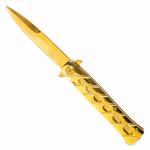

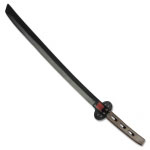





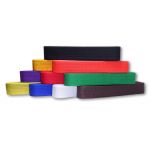
 (2)
(2)